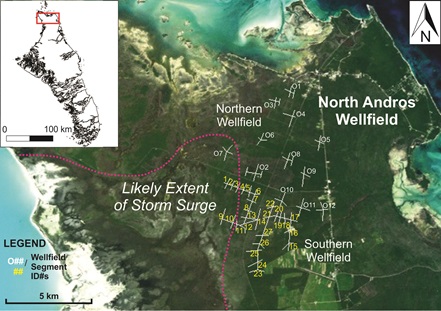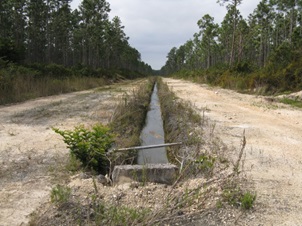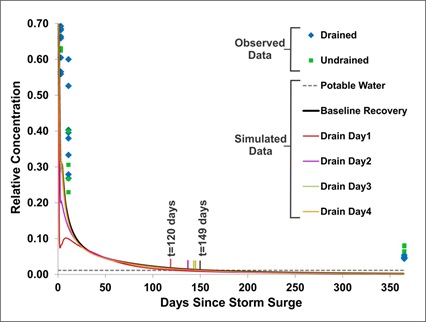 |
|
The main water supply for Andros Island is abstracted via trench wellfields. These trenches are designed to allow fresh water to be skimmed off the top of the thin freshwater lens, thus limiting upconing. However, these trenches leave the water supply vulnerable to contamination from events such as storm surge overwash, which occurred during Hurricane Frances in 2004. Saltwater filled the trenches and contaminated the lens. This project modelled the freshwater lens response and recovery time following the storm surge overwash to determine the optimal remedial actions. |
|
 |
|
 |
|
This work was done by Shannon Holding (PhD, 2014). Further details can be found in Holding and Allen (2015) From days to decades: numerical modelling of freshwater lens response to climate change stressors on small low-lying islands, Hydrology and Earth System Science 19: 933-949.